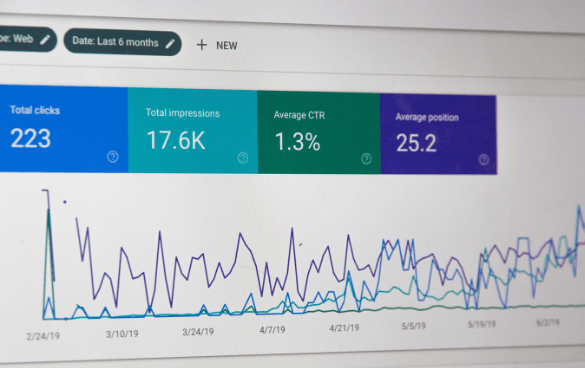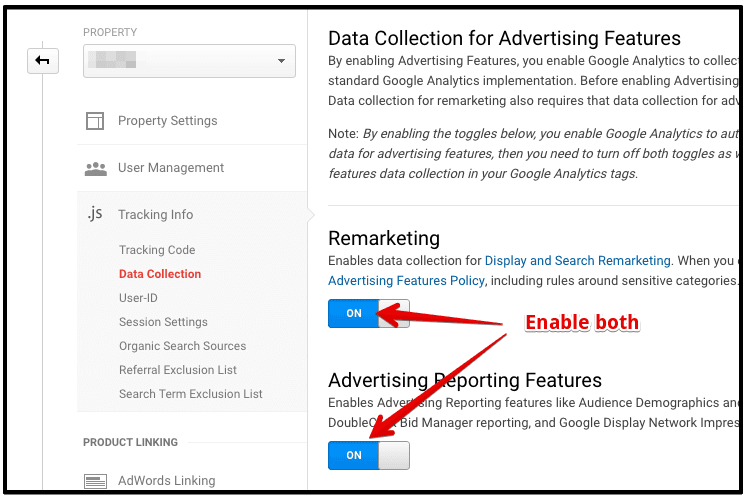Efficient Strategies for Remarketing In Google Analytics
Efficient Strategies for Remarketing In Google Analytics
Blog Article
Using Remarketing in Google Analytics: A Comprehensive Guide
Utilizing remarketing in Google Analytics offers services a critical side in connecting to prospective consumers. The capacity to target individuals that have already connected with your internet site offers an unique possibility for customized marketing efforts. By understanding exactly how to craft target market lists and release them properly, services can dramatically improve their conversion rates. However, the complexities of establishing and maximizing remarketing campaigns need a comprehensive understanding of audience division and performance evaluation. This guide will clarify the crucial actions associated with taking advantage of the full possibility of remarketing in Google Analytics, leading to improved advertising and marketing outcomes.
Comprehending Remarketing in Google Analytics
Remarketing in Google Analytics enables businesses to tactically target users that have formerly interacted with their internet site or mobile application. By leveraging data from Google Analytics, businesses can create customized remarketing checklists based upon user behavior, such as web pages visited, activities taken, or details goals attained. This effective device enables companies to re-engage with customers who have actually shown interest in their service or products, inevitably boosting the chance of conversion.
Comprehending the various kinds of remarketing strategies is crucial for a successful project - What Is “Remarketing” In Google Analytics?. Google Analytics offers different alternatives, consisting of conventional remarketing, dynamic remarketing, and remarketing checklists for search ads (RLSA) Each kind serves a special function and can be customized to meet details advertising objectives
Additionally, assessing the efficiency of remarketing campaigns is essential for enhancing results. Google Analytics provides useful understandings right into the effectiveness of different remarketing approaches, permitting companies to make data-driven decisions and improve their targeting technique. By continuously changing and keeping an eye on remarketing efforts based on analytics information, businesses can maximize ROI and drive success in their advertising and marketing initiatives.
Establishing Remarketing Projects

After establishing audience checklists, the next action is to link Google Analytics with Google Advertisements. By linking these two platforms, companies can seamlessly transfer audience checklists from Google Analytics to Google Ads for remarketing functions. This combination enables more exact targeting and better project performance.
As soon as the accounts are linked, services can develop remarketing campaigns in Google Advertisements utilizing the target market notes previously defined in Google Analytics. These projects can be customized with specific ad creatives, messaging, and bidding process approaches to efficiently re-engage with past site visitors and drive conversions. By following these actions, services can leverage the power of remarketing to improve their advertising efforts and enhance ROI.
Making Use Of Audience Segmentation Methods

Predefined sections in Google Analytics permit you to swiftly analyze usual target market groups like brand-new customers, returning individuals, or users that finished a particular goal on your web site. Customized sectors, on the various other hand, allow you to create distinct sections based on particular standards that are crucial to your organization purposes. Dynamic remarketing checklists automatically readjust based upon individual behavior, revealing individualized ads to users who have engaged with your website specifically means.
Studying Remarketing Performance Metrics
Upon assessing the efficiency of remarketing campaigns in Google Analytics, the analysis of essential performance metrics offers useful understandings into audience involvement and conversion prices. By delving into metrics such as click-through prices (CTR), conversion prices, expense per acquisition (CERTIFIED PUBLIC ACCOUNTANT), and return on advertisement spend (ROAS), marketers can gauge the success of their remarketing initiatives. Assessing these metrics enables marketing experts to maximize projects, improve target market targeting, and designate budget plans effectively to improve total remarketing Click Here efficiency.
Maximizing Remarketing Approaches
When refining remarketing approaches in Google Analytics, concentrating on audience division is critical for accomplishing project success. By dividing your audience right into specific segments based upon their actions, demographics, or interests, you can customize your ads more properly per team. This targeted approach raises the chance of involving users who have actually currently shown interest in your solutions or products, leading to higher conversion prices.
An additional critical aspect of enhancing remarketing browse this site approaches is constantly screening and refining your projects (What Is “Remarketing” In Google Analytics?). A/B testing various advertisement creatives, messaging, or offers can help you recognize what resonates finest with your audience and drives one of the most conversions. By analyzing the performance of these tests in Google Analytics, you can make data-driven decisions to optimize your remarketing efforts even more
Additionally, leveraging vibrant remarketing can substantially enhance your campaign results. This attribute enables you to reveal individualized ads to users based upon their previous interactions with your web site, showcasing solutions or products they have formerly seen. By delivering customized material to customers based upon their actions and interests, dynamic remarketing can aid increase involvement and drive conversions.
Final Thought
In verdict, using remarketing in Google Analytics is a strategic method to target individuals who have previously involved with a site. By creating customized audience listings and making use of audience segmentation approaches, organizations can enhance remarketing advocate raised conversion rates. Analyzing efficiency metrics and constantly optimizing strategies are vital for taking full advantage of the performance of remarketing initiatives.
Google Analytics uses various options, consisting of typical remarketing, vibrant remarketing, and remarketing checklists for search ads (RLSA)After establishing up audience listings, the following action is to link Google Analytics with Google Advertisements. By connecting these two platforms, organizations can flawlessly transfer audience go to this website checklists from Google Analytics to Google Advertisements for remarketing objectives.Once the accounts are connected, services can develop remarketing projects in Google Ads utilizing the audience details previously specified in Google Analytics.When refining remarketing strategies in Google Analytics, concentrating on target market segmentation is critical for attaining project success.
Report this page